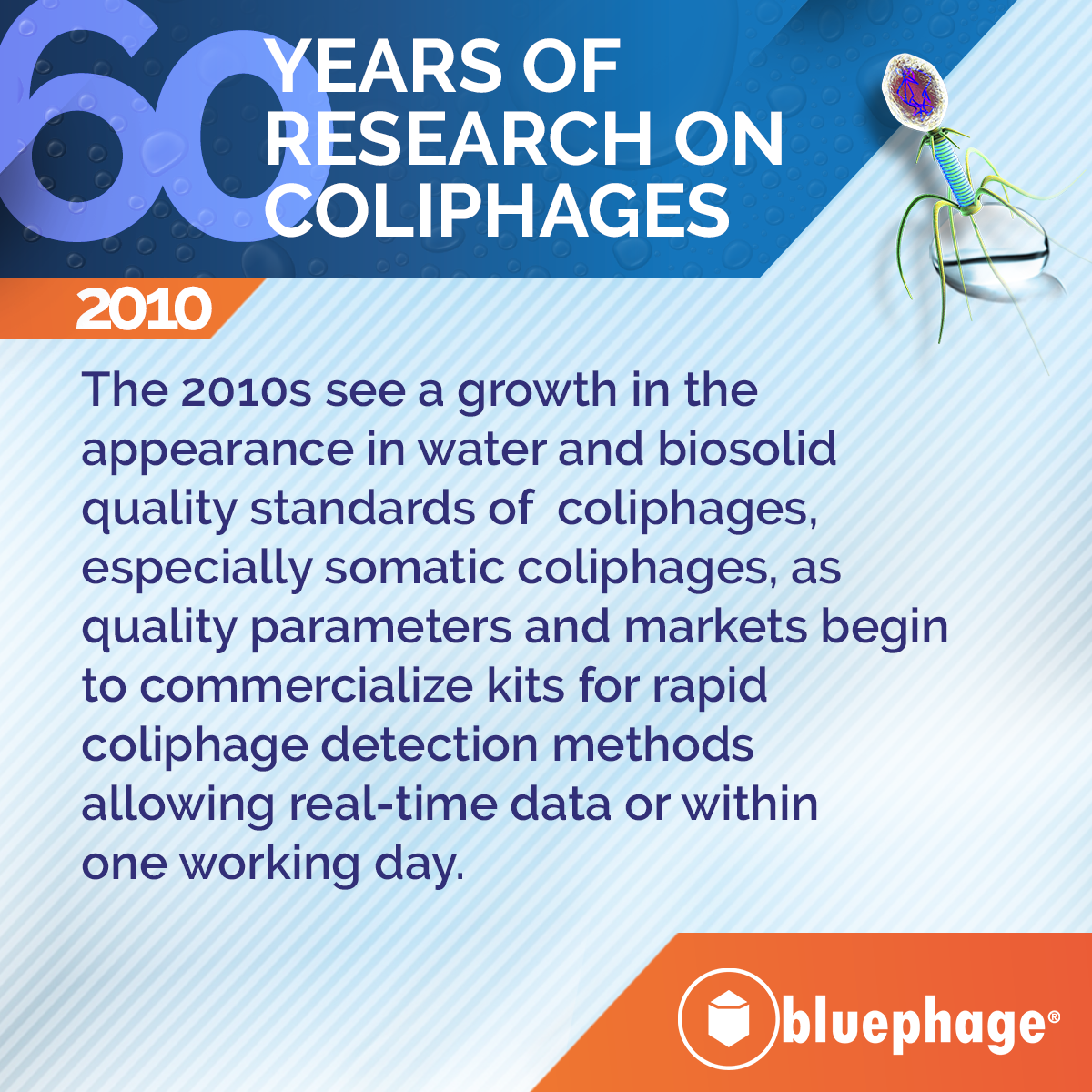BLOG | Bluephage
Coliphages as tools in microbiological water quality management: 60 years of research development.
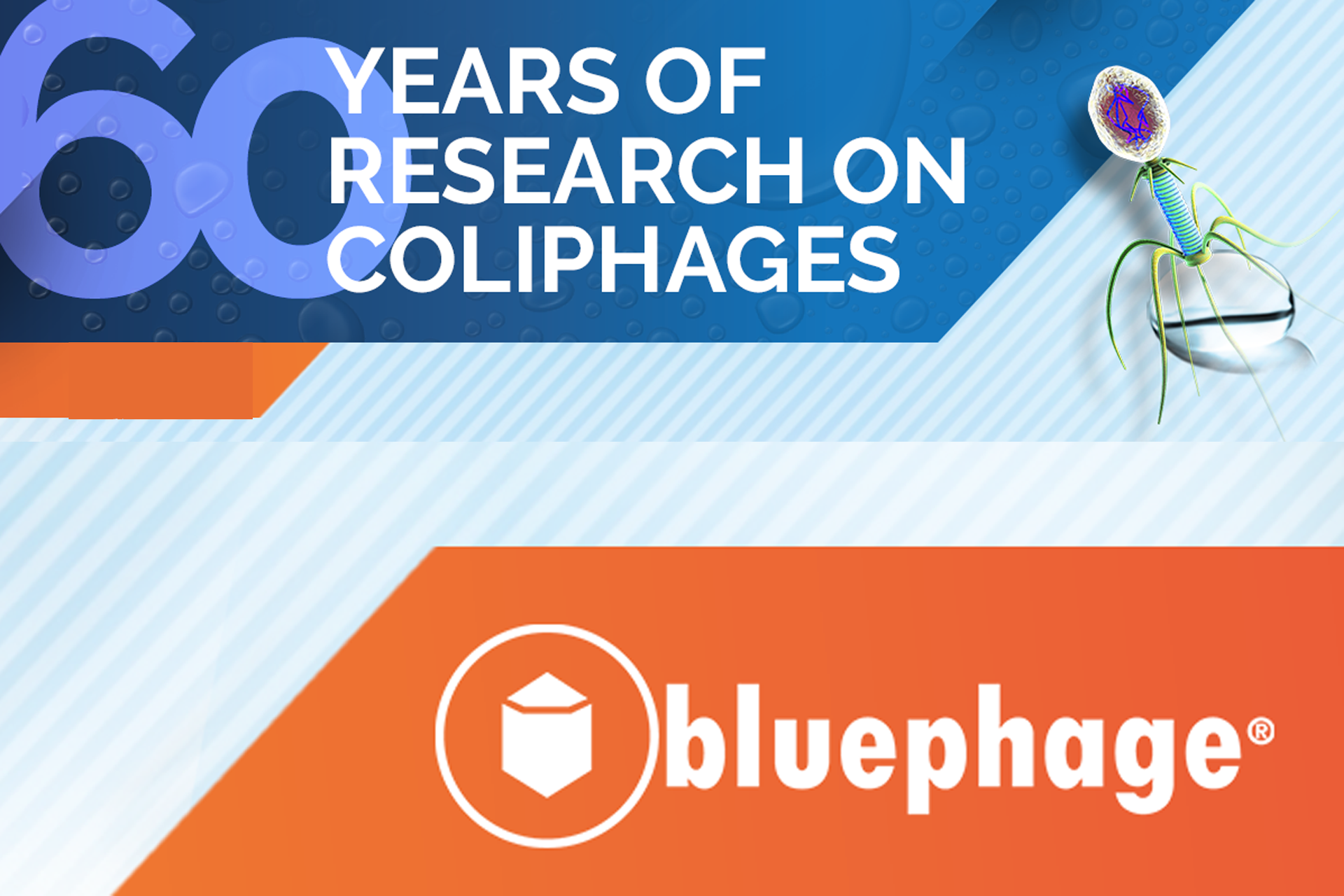
Pioneering studies, from the late 1960s to the late 1970s
In the late 1960s and especially in the early 1970s, the idea began to spread, supported by data, that bacterial indicators were ineffective in predicting the presence of human viruses in an aquatic environment. This, added to the fact that the detection and enumeration of animal viruses was difficult and expensive, launched the search of alternative viral indicators. The idea then emerged that perhaps enteric bacterial phages could be used as surrogates of human viruses.
It was not until the late 1970s and early 1980s that some very scattered papers were published that could be called pioneering in using coliphages as viral indicators. They were mainly looking for somatic coliphages with strains and media quite diverse from one to another study.
Though not supported by sound pieces of evidence, the idea that coliphages multiply in water and therefore cannot be used as indicators emerged and began to be widely accepted.
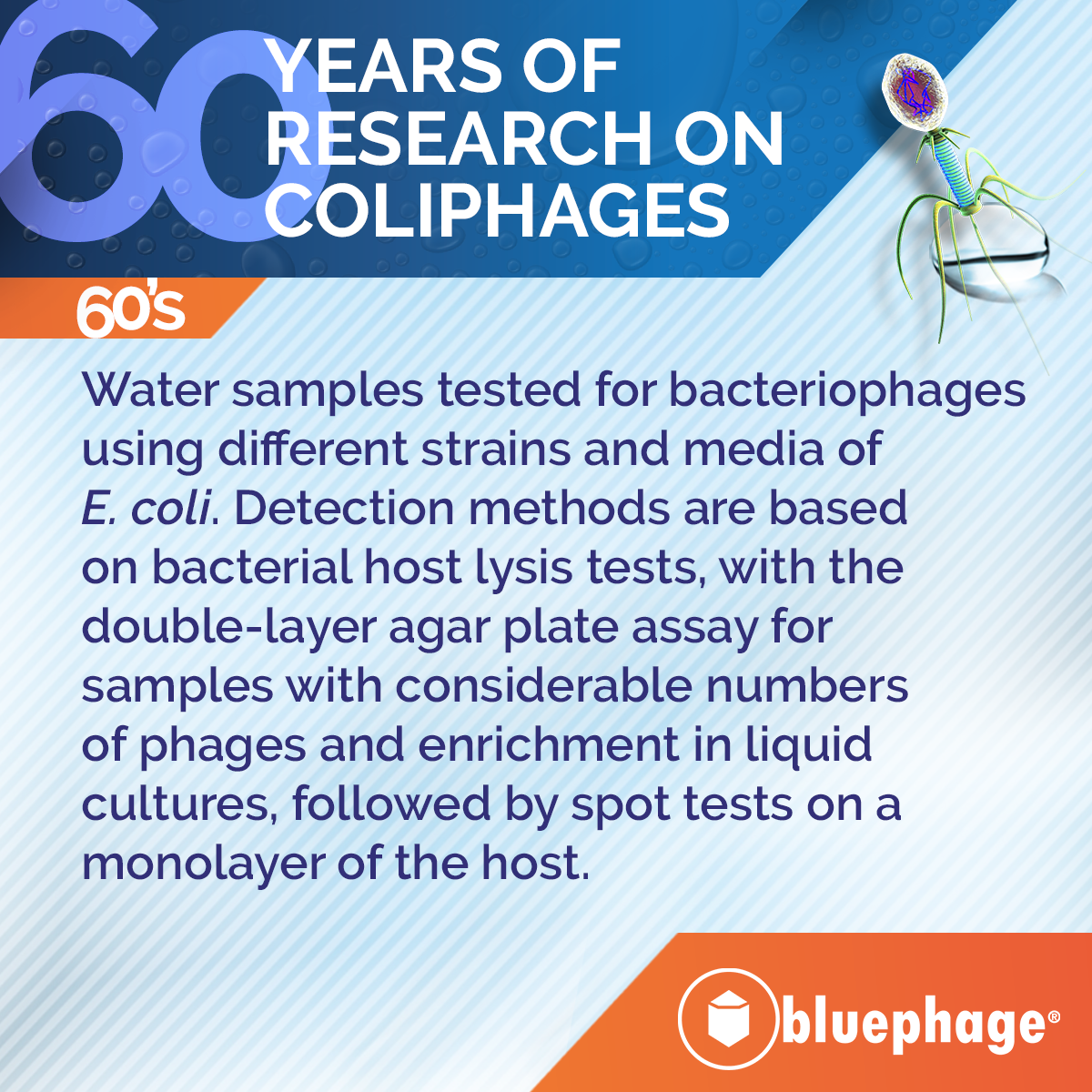
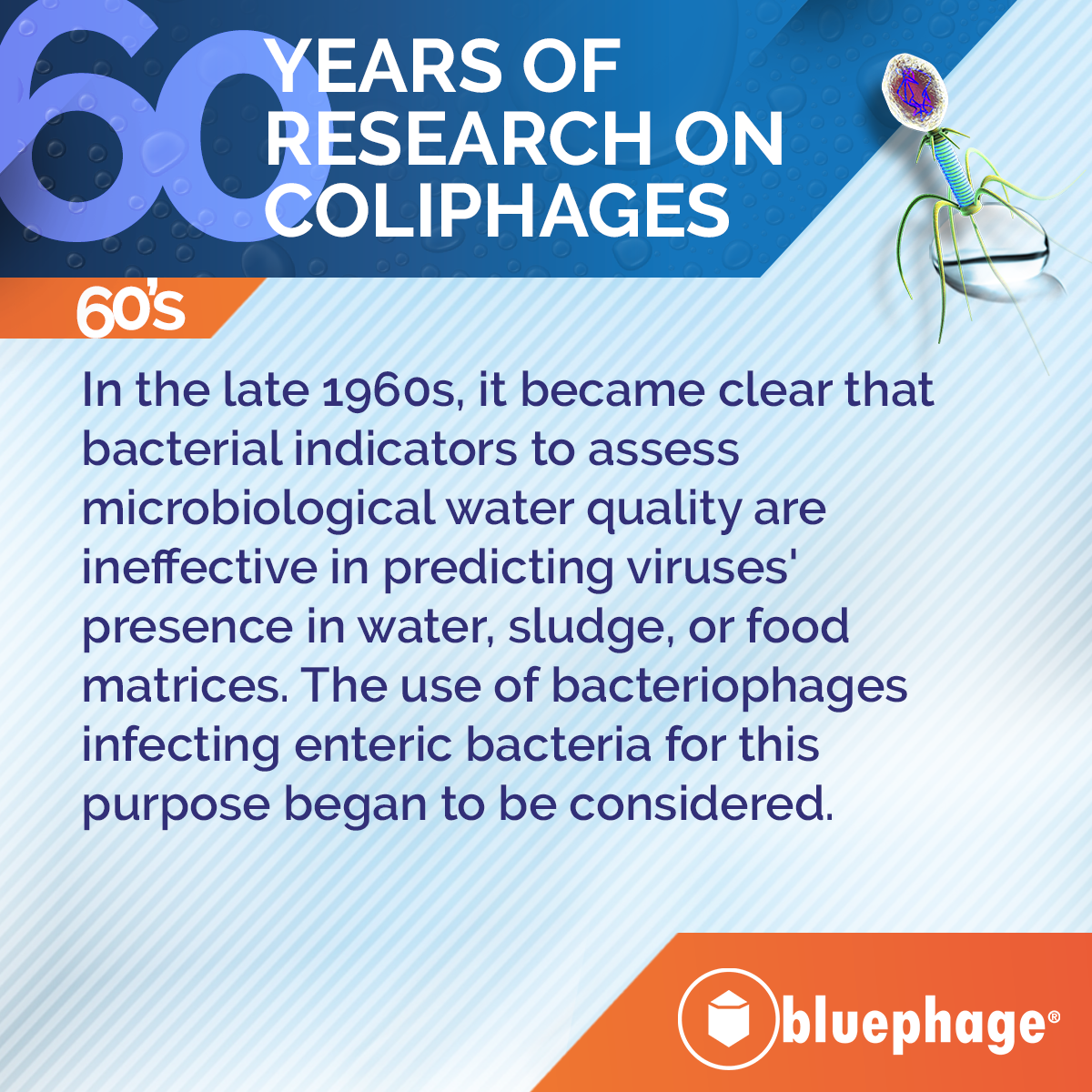

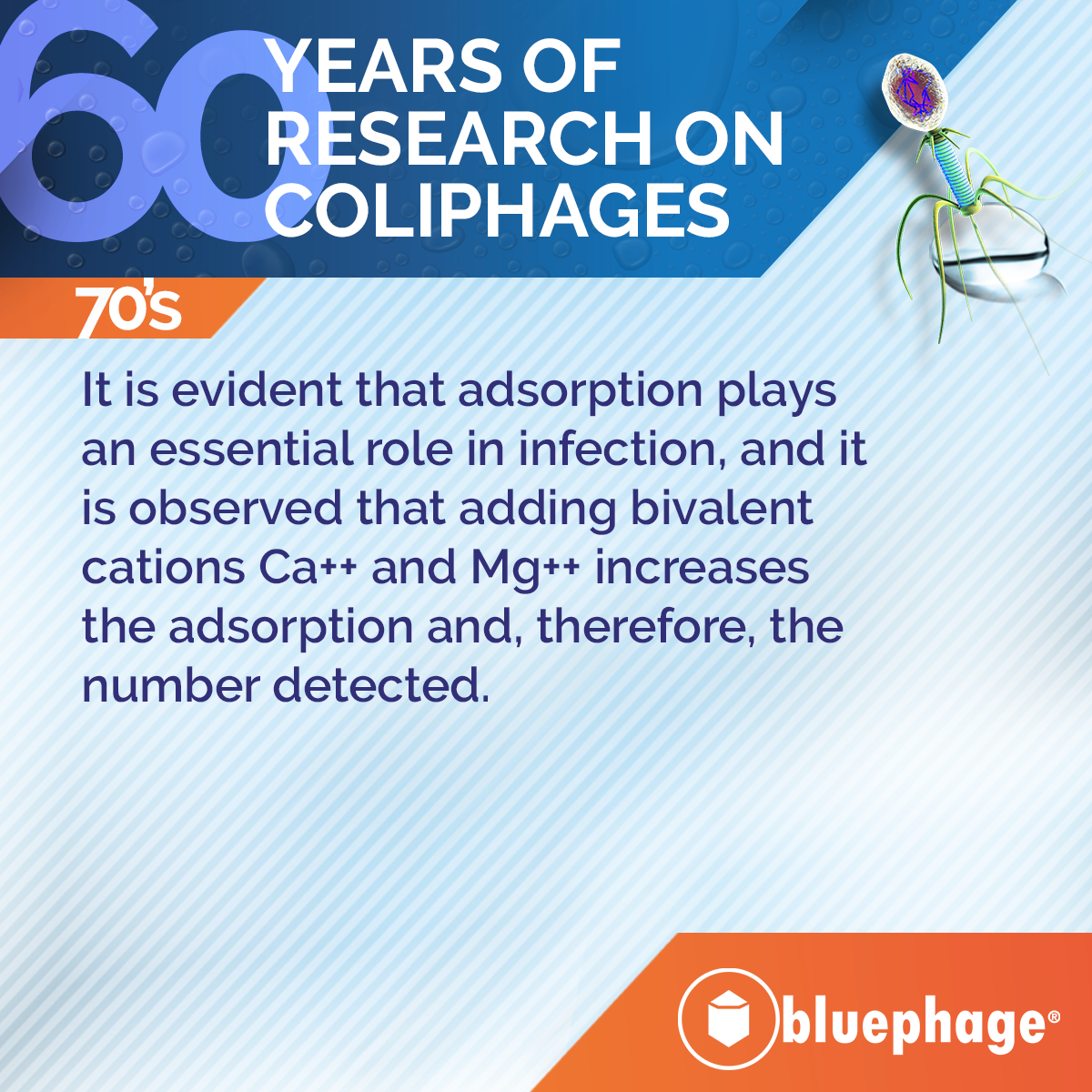
From the early 1980s to the early 1990s.
This decade contemplates the general acceptance of E. coli C as an appropriate host strains for somatic coliphage detection. The present consensus hosts for somatic coliphages are E. coli CN, also called WG5, used in the ISO standard and E. coli CN13 used in the US-EPA methods are derivates of E. coli C. There is an awareness that the strains chosen may not be the ones that detect the most virus, but since they are capable of detecting a sufficiently high number and in any type of water, it is decided to establish those currently used in ISO and USEPA methods.
Microbiologists start searching for enteric bacteriophages other than somatic coliphages that do not replicate outside the digestive tract. In North America (New England and Canada) and Europe (Holland), they proposed to explore F-specific coliphages, and in Barcelona (Spain), they sought for Bacteroides infecting bacteriophages.
It is a period for many publications about sensitivity/resistance to disinfection done with reference coliphages such as f2, MS2, T4, and contribution of mounting data on the presence of coliphages in different water matrixes.

The early 1990s to early 2000s
Special attention is given to the standardization of methods – in terms of strains and media – and to the need for interlaboratory work and quality control implementation, as well as to establish the deposit of host strains in culture collections to preserve their stability.
ISO and USEPA standardized methods that are very similar regarding strains and media, although ISO opted for DAL (double agar layer) and USEPA for SAL (single agar layer) enumeration procedures.
The appearance of molecular techniques based on the amplification of nucleic acids, such as PCR, led experts to believe that they would allow the detection of all viruses in water matrices and would therefore be of great importance in water management. However, PCR, which has been extremely useful in providing a great deal of crucial information in water virology, does not distinguish between reliable and repetitive, and hence feasible, procedures infectious from non-infectious viral particles and is therefore not useful for monitoring virological water quality, nor for assessing the performance of water treatment processes or for quantitative microbial risk assessment.
Concentration methods began to be developed, and it was observed that those that worked well for animal viruses did not necessarily do so for bacteriophages. Nevertheless, concentration methods specific for bacteriophages were stablished.
Interest begins to emerge in using phages as potential markers of the origin of fecal contamination (“microbial source tracking”); primarily Bacteroides phages and specific sero/genogroups of F-specific RNA coliphages.
Meanwhile, data continue to accumulate to ensure the suitability of coliphages as indicators of viral contamination: 1) their abundance in different local and geographic environments, and 2) their behavior against disinfection and natural inactivation. Many of these studies compare different types of phages with bacteria and viruses.

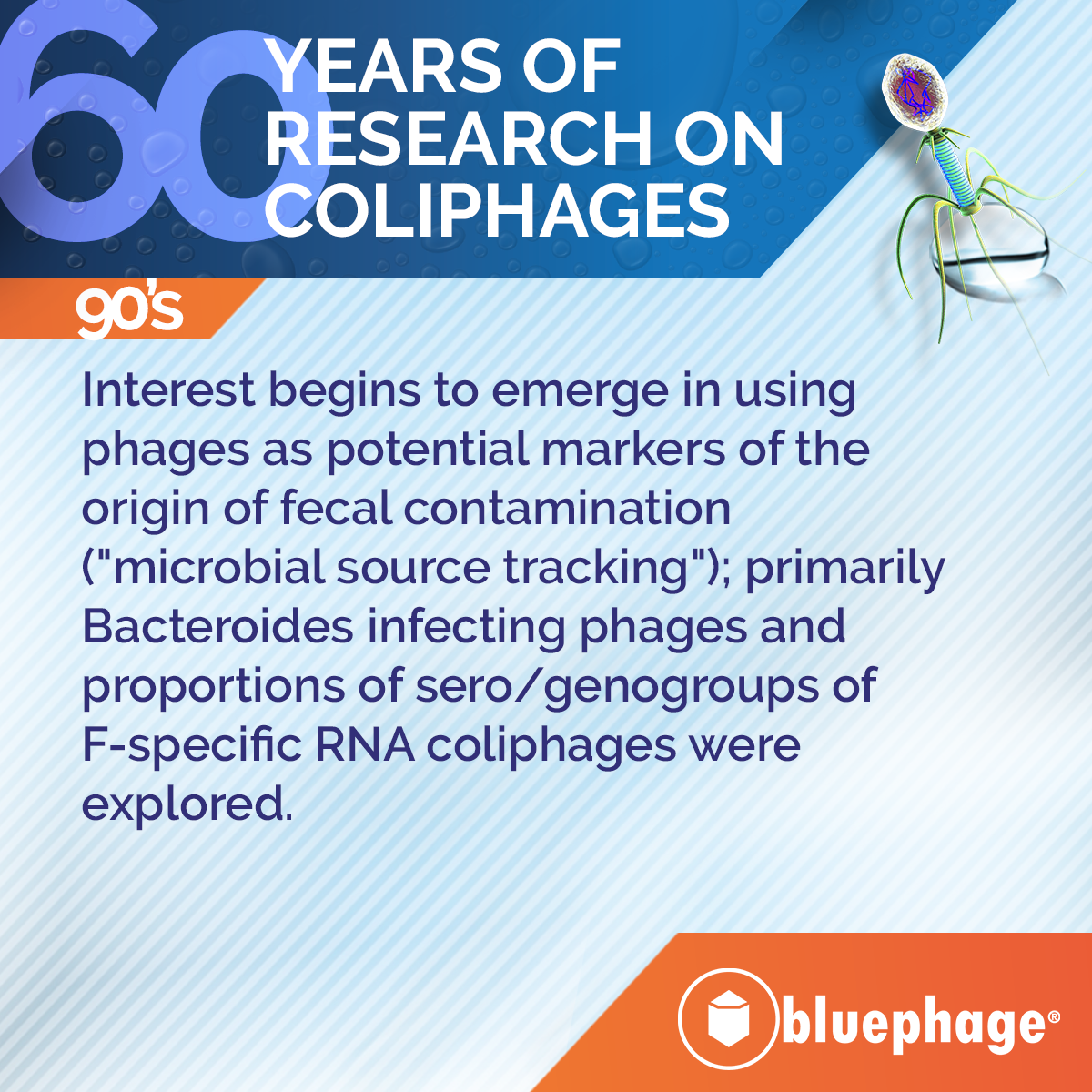
From the early 2000s to early 2010.
Sufficient evidence emerged to claim that, if occurring, the potential effects of replication in the aquatic environment of somatic coliphages would not affect the numbers detected in water samples. This led to the acceptance of somatic coliphages as indicators of fecal/viral contamination of waters.
It starts to become clear that the numbers of viruses, in fact gene copies, obtained by PCR are not suitable either for water industry management or for performing “risk assessment” studies.
A debate begins on whether to adopt somatic coliphages, which are more abundant and easier to detect or F-specific coliphages, which are more homogeneous.
Data on the prevalence of bacteriophages in waters and biosolids accumulated, and for most experts and policymakers, the need to introduce coliphages as indicators in water quality standards became evident.

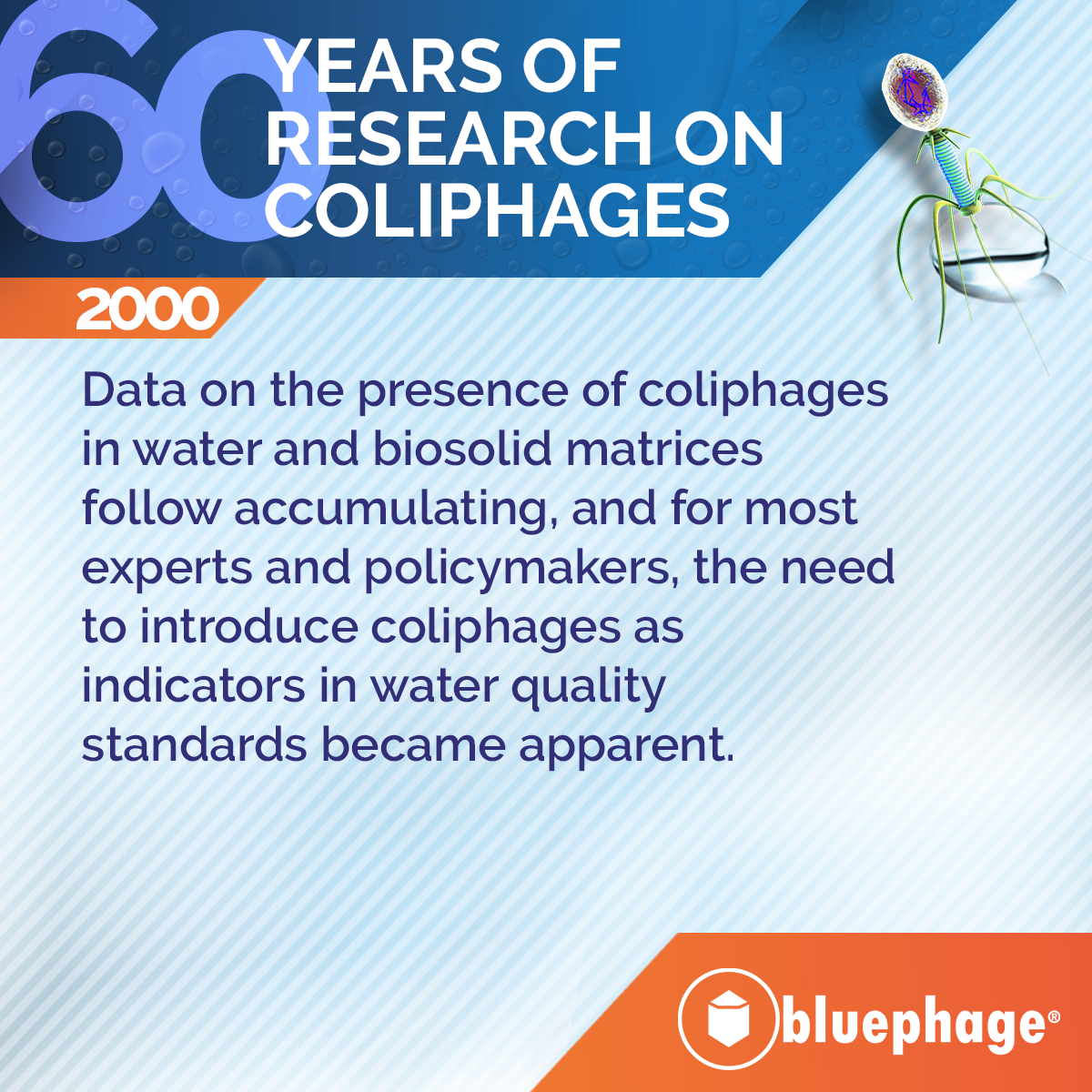
From the beginning of the 2010s until now
Emergence in water and biosolids quality standards worldwide that include coliphages, especially somatic coliphages, as quality parameters.
The appearance of rapid coliphage detection methods that allow data to be obtained in real-time or within one working day, and the commercialization of easy-to-use kits.
The emergence of crAssphage determination as a compelling method for identifying the human origin of fecal contamination.
Data continue accumulating to support and corroborate the presence, permanence and persistence of coliphages in water as an effective viral and fecal indicator.
The rising concentration of inhabitants in big metropolises, climate change, aging of existing infrastructures worldwide, and emerging pathogens, forecast that the management of wastewater and water resources will become progressively more challenging. Due to the simplicity, quickness, and low cost of detection tests, somatic coliphages used as indicators of quality and operation of treatments are called to play a very significant role as tools for the water industry.
